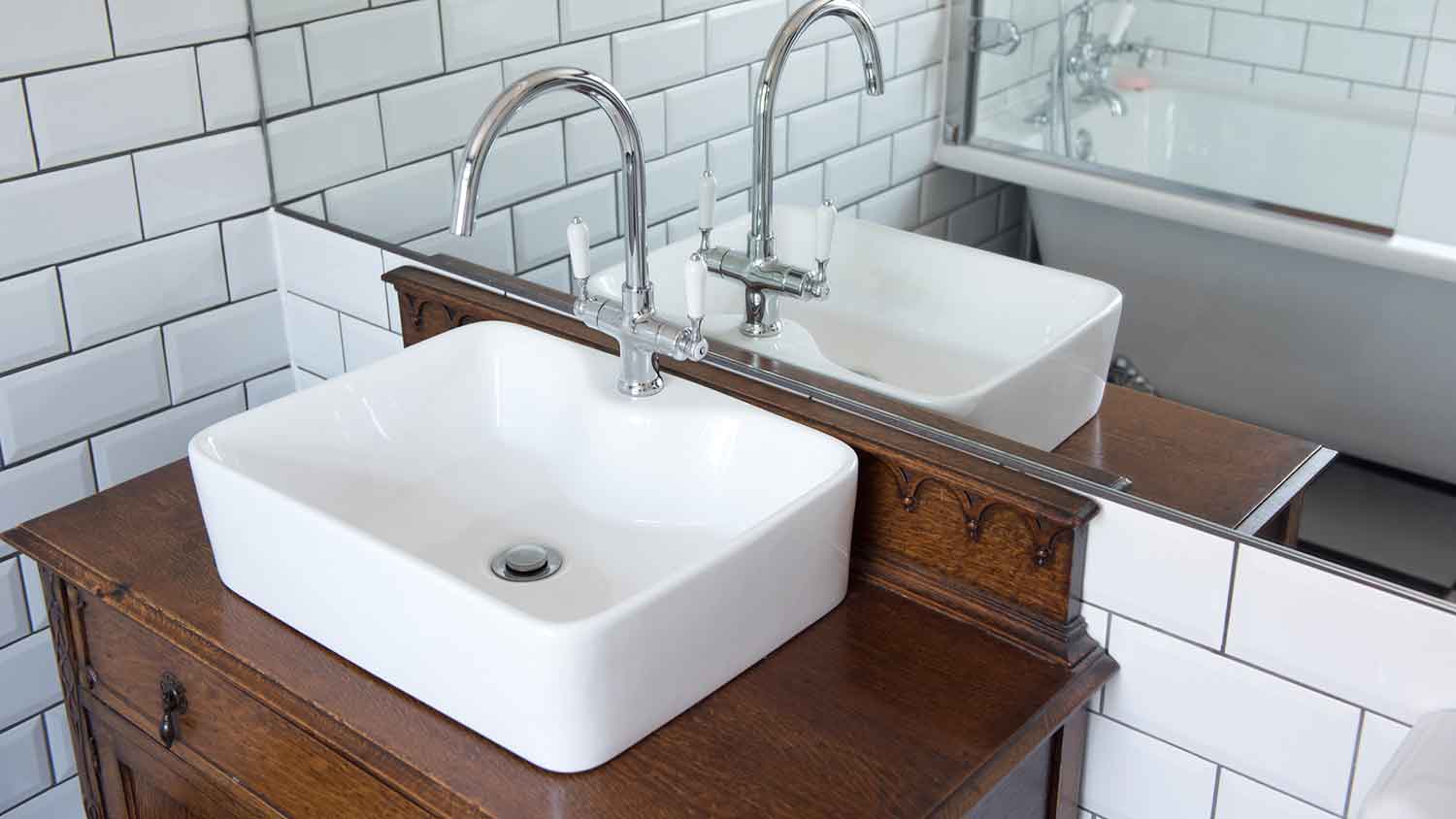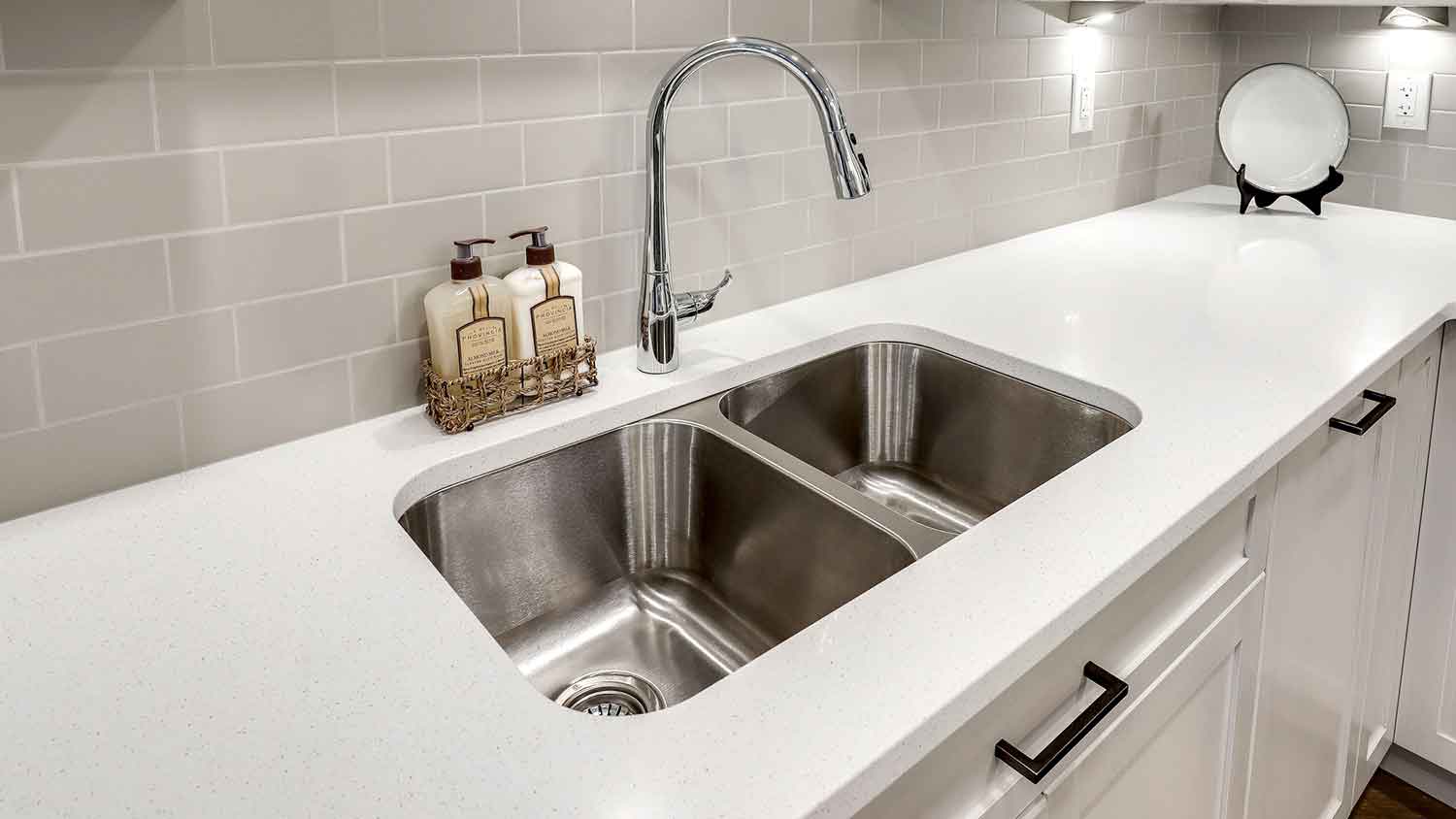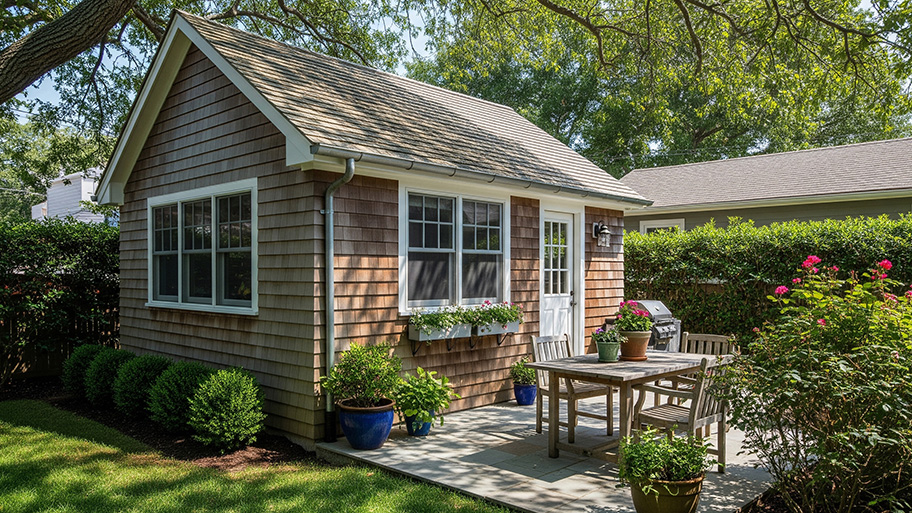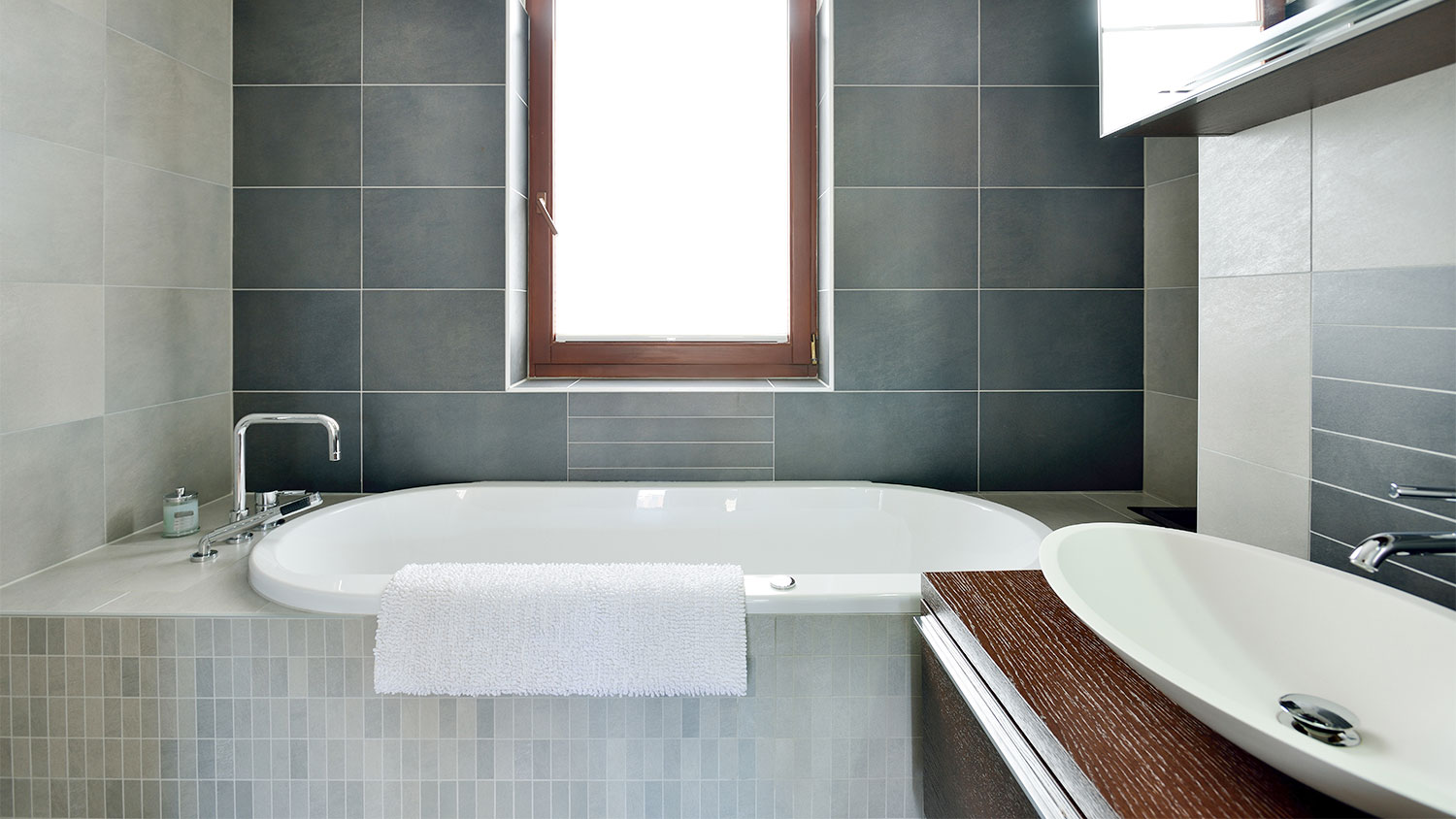
A bidet—stand-alone, attachment, spray nozzle, or toilet combo—reduces toilet paper usage and saves money, but how much is a bidet? Here’s how much you’ll pay.
The crucial choice between one basin or two


Single sinks are a more budget-friendly option.
Double sinks are more functional and better for large households.
A home's resale value tends to be higher with double sinks.
In kitchen and bathroom design, one of the most important choices is between single vs. double sinks. Selecting the right option involves considerations beyond size and capacity, including installation ease, maintenance, and cost-effectiveness. We've gathered all the criteria you need to consider to make the best choice for your home.
The main differences between single and double sinks are their size and capabilities. A single sink is designed with only one basin, making it a suitable option for smaller spaces or those with minimal needs. A double sink offers two basins, providing added convenience and versatility for multitasking or shared spaces. Double sinks are often a popular choice for those with larger households.
Price is another differentiating factor, as double sinks cost more than single sinks. The average cost of a single sink ranges between $375 and $550, whereas a double sink costs between $475 and $675. The price difference comes down to the hardware and labor required for each.

A sink fixture with a lone basin for dishwashing, handwashing, and food preparation is known as a single sink. It’s commonly found in bathrooms, kitchens, or utility rooms and is often more compact and space-efficient than double sink configurations. Single sinks are perfect for smaller spaces or individual use as they provide simplicity and cost-effectiveness in design and installation.
| Pros | Cons |
|---|---|
| Space-efficient | Limited multitasking |
| Cost-effective | Lack of functionality |
| Easy to install | Inconvenient for large households |
| Simple maintenance | Potential for clutter |
Best for:
Small kitchens or bathrooms where space is limited.
Individuals or small households with minimal needs.
Budget-conscious homeowners.
Single sinks are most beneficial for space efficiency, particularly in smaller kitchens or bathrooms where every inch matters. This compact design maximizes available space and contributes to a more streamlined and visually appealing environment. Single sinks are particularly suitable for small households, providing ample space for daily tasks while catering to the needs of individuals or small families with modest requirements.
Single sinks are a cost-effective solution and often less expensive than double sinks. Their affordability extends to both the initial investment and long-term maintenance, as single sinks require less labor and upkeep. The ease of installation is another notable advantage, as single sinks have fewer components, making them quicker and simpler to install.
The versatility of single sinks is noteworthy, as they come in various styles, materials, and configurations to suit different design preferences and needs. Whether it's a sleek stainless steel sink for a modern kitchen or a classic porcelain sink for a traditional bathroom, there's a single sink option to complement any aesthetic.
While a single sink can be a big space saver, it does come with limitations. One significant limitation is the challenge of multitasking, as single sinks only offer one basin, making it difficult to perform multiple tasks simultaneously. For instance, washing dishes while also rinsing vegetables may prove cumbersome without separate compartments.
Single sinks may lack the functionality and convenience of double sinks, especially in shared living spaces or busy kitchens where the demand for multiple basins is higher. This limitation is further exacerbated by the potential for clutter in the sink area, as there is no separate basin for food preparation or washing, leading to a quicker accumulation of mess. There is also limited soaking space, which doesn’t bode well for dinner party cleanups.

A double sink is a type of sink fixture featuring two separate basins, providing increased functionality and versatility for various tasks. This configuration is particularly advantageous in shared living spaces or busy households, where the demand for multiple basins is higher. With separate compartments, double sinks help to minimize clutter and streamline workflow, enhancing efficiency in daily routines.
| Pros | Cons |
|---|---|
| Functional | Requires ample space |
| Convenient | Costly |
| Versatile | More maintenance |
| Better organization | Potential water waste |
Best for:
Households with multiple occupants.
Cooking enthusiasts
Entertainment spaces.
Double sinks are highly desirable fixtures in kitchens and bathrooms due to their multifunctionality and convenience. They enable users to multitask effortlessly by performing different activities simultaneously in each basin, enhancing efficiency and streamlining daily routines.
In shared living spaces or busy kitchens, two basins facilitate smoother workflow. Furthermore, double sinks improve organization by providing designated areas for tasks like dishwashing, food preparation, and maintaining tidiness. Their versatility caters to diverse needs and preferences, potentially enhancing the resale value of homes in markets where this configuration is sought after.
Double sinks are often considered desirable in homes, but their use has some drawbacks. Two basins increase the space requirements and can pose challenges in smaller kitchens or bathrooms with limited square footage and counter space. This means less workspace for food preparation or other tasks, especially in smaller kitchens.
The cost of purchasing and installing double sinks tends to be higher than single sinks due to the additional plumbing and materials required, making them less budget-friendly for some homeowners. The complexity of maintenance for double sinks can be a deterrent, as cleaning and managing multiple components may prove more challenging and time-consuming than single sinks.
Another concern is the potential for water wastage, particularly if both basins are frequently in use simultaneously, highlighting the importance of implementing water-saving fixtures and habits to mitigate this issue.
While looks can be subjective, many homeowners enjoy the appearance of a double sink because of the symmetry and organization it adds to the room. This is especially true in larger kitchens or bathrooms, where they can serve as a focal point or anchor for the space.
Double sinks offer a broader range of options and customization than single sinks. With the ability to mix and match kitchen sink depth, shapes, and configurations, as well as choose from various materials and styles, double sinks provide ample opportunities for tailoring to individual preferences and specific design needs. This versatility makes double sinks the preferred choice for those seeking greater flexibility and customization in their sink configuration for kitchens and bathrooms.
Both single and double sinks can be durable depending on factors like material quality and construction rather than the number of basins. While double sinks may have more components, such as additional plumbing, both types of sinks can provide long-lasting durability with proper maintenance, making them reliable choices for kitchen and bathroom fixtures.
On average, sink installation costs between $220 and $650, but a single sink is more likely to be close to the lower end of that price range. With only one basin to manufacture and install, single sinks incur fewer material and labor costs than double sinks, which require additional plumbing and hardware. This simplicity in design and installation translates to lower upfront expenses, making single sinks a budget-friendly option.
A single sink is easier to install than a double sink primarily due to its simpler design and fewer components. With only one basin to position and connect, a local sink installation pro can set a single sink up faster and more easily than a double sink.
A single sink is easier to maintain than a double sink due to its streamlined design and fewer components. Maintenance tasks such as scrubbing, sanitizing, and removing debris are more straightforward and efficient with only one basin.
A double sink often yields a better resale value than a single sink due to its perceived higher functionality and versatility. Potential homebuyers often view double sinks as premium features that offer added convenience and efficiency, particularly in busy kitchens or shared bathrooms.
From average costs to expert advice, get all the answers you need to get your job done.

A bidet—stand-alone, attachment, spray nozzle, or toilet combo—reduces toilet paper usage and saves money, but how much is a bidet? Here’s how much you’ll pay.

Accessory dwelling units can be a smart investment, but your ADU cost will depend on the size, type, and materials you choose. Here’s how it breaks down.

The cost of installing a bathtub or a shower liner depends on the type of tub or shower, size, and features. This guide will show what you can expect to pay for your project.

Learn how to build a DIY dog wash station to make your pup’s bathtime a less backbreaking job that leaves your family bathroom free from dog hair and dirt.

An updated bathtub can give a bathroom a whole new look. Find out how much it costs to replace a bathtub in Boston, MA, including prices by type and labor costs.

Knowing how to install a shower requires some skill and experience, but a shower enclosure installation is a doable DIY project if you follow some basic steps.